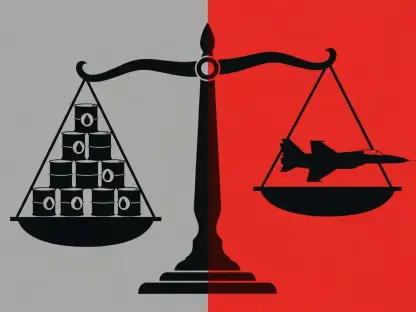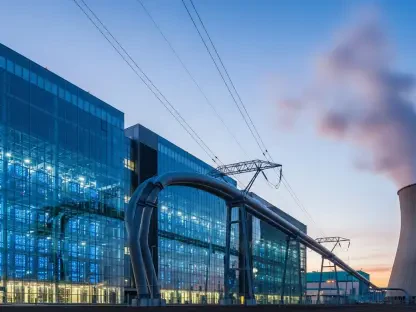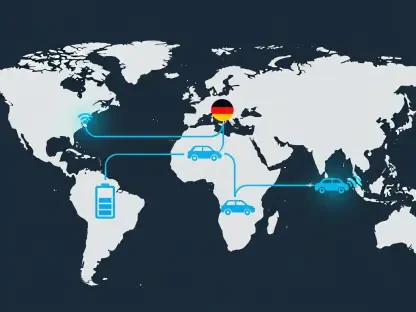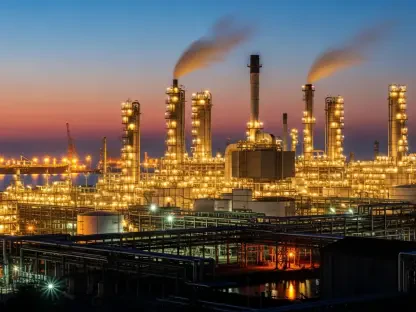Navigating the Complexities of Global Oil Markets
In a world where geopolitical tensions frequently threaten to upend energy markets, the resilience of oil prices stands out as a remarkable phenomenon that defies expectations of volatility. Despite sanctions targeting major oil producers like Russia, Brent crude remains steady at around $60 per barrel. This stability prompts a critical examination of the underlying forces at play in the global oil landscape. The purpose of this market analysis is to dissect how surplus capacity acts as a buffer against price shocks, explore current trends in supply and demand dynamics, and project future shifts that could influence energy markets. By delving into these elements, this discussion aims to provide clarity on the mechanisms sustaining affordability and offer strategic insights for stakeholders navigating an unpredictable environment.
In-Depth Examination of Oil Market Trends and Projections
Surplus Capacity: A Buffer Against Geopolitical Disruptions
At the core of current oil price stability lies the concept of surplus capacity, an essential mechanism that mitigates the impact of sanctions and regional conflicts. The global market currently possesses enough unused production potential to offset disruptions caused by restrictions on Russian oil exports due to ongoing international disputes. This excess supply ensures that even as certain refiners scale back imports under pressure, the overall market avoids dramatic price surges. Without significant escalations in geopolitical strife, this buffer is expected to maintain a calming effect, keeping energy costs manageable for consumers and industries worldwide.
OPEC+ Strategies: Balancing Output and Market Equilibrium
Another pivotal factor shaping oil market dynamics is the coordinated approach of OPEC+ in managing production levels. Recent indications suggest a potential modest increase in output toward the end of the year, a decision aimed at preventing any upward price pressure stemming from supply constraints. This strategic adjustment highlights the group’s role in leveraging surplus capacity to stabilize markets, especially as some Asian refiners adapt to sanctions by seeking alternative sources. However, the challenge remains in avoiding overproduction, which could depress prices excessively and strain producer economies, underscoring the delicate balance OPEC+ must strike.
Regional Energy Demands: Asia’s Growing Appetite and Challenges
Shifting focus to regional nuances, the ASEAN region faces a staggering projected need for an additional 300 gigawatts of electricity capacity over the next decade, comparable to powering an economy the size of Japan. Despite global efforts to transition to cleaner energy, coal is likely to remain a significant contributor to meeting this demand, revealing a tension between immediate energy needs and long-term sustainability goals. This reliance on traditional fuels, coupled with varying responses to sanctions on Russian oil across Asian markets, illustrates how surplus capacity interacts differently with localized economic priorities and energy strategies.
Future Supply Shifts: The LNG Surge and Its Implications
Looking ahead, a transformative influx of liquefied natural gas (LNG) is set to reshape energy markets, with an estimated 300 billion cubic meters of new supply expected between 2026 and 2030. Major producers such as the United States, Canada, Australia, and Qatar are driving this growth, signaling a potential era of abundant and cheaper gas. This development aligns with forecasts of sustained low energy prices, provided no major geopolitical crises emerge. The anticipated surplus in LNG capacity could further complement oil market buffers, offering diversified energy options and reducing dependency on any single resource.
Geopolitical Strategies: Securing Critical Minerals for Energy Transitions
Beyond hydrocarbons, the energy sector is witnessing strategic moves to secure critical minerals essential for technological and renewable advancements. Recent agreements between the United States and Southeast Asian nations aim to diversify supply chains amid export controls from dominant players like China. This push toward local processing and value addition in mineral-rich regions reflects a broader trend of reducing reliance on volatile global markets. Such strategies are poised to influence future energy transitions, potentially enhancing market stability by ensuring access to materials vital for sustainable infrastructure.
Reflecting on Market Insights and Strategic Pathways Forward
Looking back, this analysis highlighted how surplus capacity served as a critical shield, maintaining oil price stability at around $60 per barrel despite sanctions on key producers. The examination revealed the intricate interplay of OPEC+ output decisions, regional energy demands in Asia, and forthcoming LNG surpluses as defining factors in market resilience. It also uncovered the strategic importance of securing critical minerals amid evolving geopolitical landscapes. Moving forward, stakeholders should consider investing in policies that bolster surplus capacity, whether through strategic reserves or enhanced production capabilities. Additionally, energy-intensive sectors might benefit from securing long-term contracts at current favorable rates, while nations could prioritize local processing of resources to build economic resilience. These steps, grounded in the insights unearthed, offer a roadmap for navigating future uncertainties and capitalizing on the stability surplus capacity provides.









